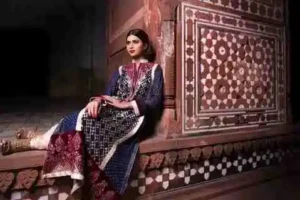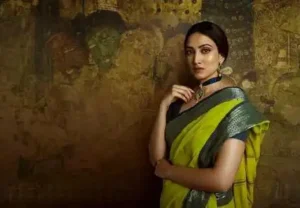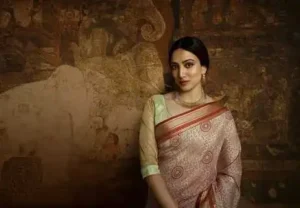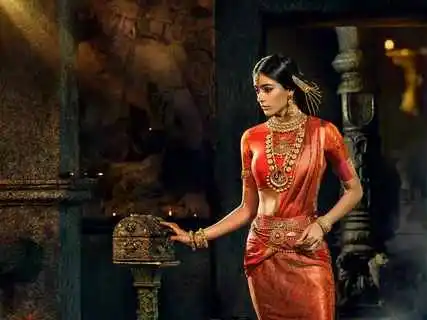Ever wondered what makes women’s Indian fashion so captivating?
The blend of women’s Indian fashion rich cultural history, vibrant colors, intricate designs, and evolving trends makes it a fascinating world of style. Whether you’re in the US or India, Indian fashion has a unique ability to combine tradition with modern-day trends, creating looks that are both timeless and fresh.
In this article, we’ll explore everything from traditional sarees to contemporary fusion wear and how women’s Indian fashion has made its mark globally.

The Roots of Women’s Indian Fashion
Indian fashion is deeply rooted in the country’s rich cultural and historical background. Each region of India has its own distinctive styles, fabrics, and embroidery techniques, making it one of the most diverse fashion landscapes in the world.
- Saree: One of the most iconic elements of women’s Indian fashion is the saree. It’s a six-to-nine-yard fabric, often made of silk, cotton, or chiffon, draped elegantly around the body. From everyday wear to weddings, the saree is a symbol of grace, femininity, and tradition.
- Lehenga: Another traditional favorite is the lehenga, a long skirt worn with a cropped blouse and a dupatta (a long scarf). It’s a staple for weddings and festivals, adorned with rich embroidery, sequins, and stones.
- Salwar Kameez: The salwar kameez is a two-piece set, typically consisting of a tunic (kameez) and trousers (salwar), paired with a dupatta. Comfortable yet stylish, it’s a popular choice for casual, formal, and festive occasions.
The Influence of Bollywood on Indian Fashion
Bollywood plays a significant role in shaping women’s Indian fashion. Indian cinema has long been a trendsetter, influencing how women dress across the country and even abroad. From iconic Bollywood movies like Dilwale Dulhania Le Jayenge to contemporary blockbusters like Padmaavat, the costumes seen on-screen often inspire fashion trends.
- Chiffon sarees became a trend after actresses like Sridevi and Rekha flaunted them in the ’80s and ’90s.
- The Anarkali suit, a floor-length dress with a fitted bodice and a flared skirt, gained popularity due to its appearance in several period dramas.
Fashion from Bollywood is not just about glitzy outfits but also about how tradition is interpreted through a modern lens, influencing how women’s Indian fashion evolves in everyday life.

Modern Indian Fashion: Fusion Wear
In recent years, women’s Indian fashion has evolved to include more fusion wear. This trend combines traditional Indian garments with Western styles, making the fashion more versatile and accessible for daily wear, especially for Indian women living abroad.
- Indo-Western Outfits: A popular fusion trend includes pairing a traditional kurta (tunic) with jeans or a saree with a modern crop top. It’s all about blending the old with the new, creating a look that’s both stylish and comfortable.
- Westernized Lehengas: For special occasions, lehengas have also undergone a modern transformation, with designers experimenting with cuts, lengths, and patterns to make them more contemporary and versatile.
Fusion fashion has gained massive popularity in the US as well, where Indian women seek to maintain their cultural heritage while incorporating Western influences. This balance creates a chic, globally relevant fashion style that’s still rooted in tradition.
Fabrics and Techniques That Define Indian Fashion
What sets women’s Indian fashion apart from global fashion is its attention to detail in fabrics, embroidery, and textiles. Here are some key materials and techniques you’ll often see in Indian fashion:
- Silk: One of the most luxurious fabrics, silk is widely used for sarees, lehengas, and salwar kameez. Whether it’s Banarasi silk from the North or Kanchipuram silk from the South, the fabric exudes elegance and sophistication.
- Chikankari Embroidery: Originating from Lucknow, chikankari is a type of intricate hand embroidery done on lightweight fabrics like cotton and chiffon. It’s both delicate and eye-catching, making it a favorite for casual and formal outfits alike.
- Bandhani and Tie-Dye: A traditional technique from Rajasthan and Gujarat, Bandhani creates beautiful patterns through a tie-dye process. You’ll often find this on sarees, dupattas, and lehengas.
The Global Appeal of Women’s Indian Fashion
Thanks to globalization and the Indian diaspora, women’s Indian fashion has spread far beyond India’s borders. Indian designers like Manish Malhotra, Sabyasachi Mukherjee, and Anita Dongre have showcased their work on international platforms, making Indian garments a global trend.
- Weddings in the US: Indian fashion has found a huge following in the US, especially for weddings. Many non-Indian brides and bridesmaids are embracing the beauty of sarees and lehengas for fusion weddings. The intricate designs and luxurious fabrics of Indian garments provide a unique, regal look that appeals to many.
- Festivals and Events: Indian fashion has also gained popularity during festivals like Diwali, Holi, and Navratri, where women wear traditional outfits such as sarees, lehengas, and Anarkali suits, even in countries like the US and UK.

Why Indian Fashion Matters in the Modern World
Indian fashion isn’t just about tradition—it’s about adaptability. In a world that is constantly evolving, women’s Indian fashion manages to stay relevant by blending heritage with modernity. Women are no longer confined to strictly traditional garments. They can now mix styles, create fusion outfits, and embrace both Eastern and Western trends.
Women’s Indian fashion is a testament to the strength of cultural identity. By wearing these garments, women not only make a fashion statement but also celebrate their heritage and individuality.
Styling Tips for Indian Fashion
If you’re in the US and want to explore women’s Indian fashion, here are a few tips to keep in mind:
- Accessorize Right: Indian fashion is all about the accessories. From statement earrings to bangles and intricate necklaces, don’t be afraid to go bold with your jewelry.
- Mix and Match: Don’t feel the need to go all traditional. Mix Indian garments like a kurta with Western pieces like jeans or a jacket for a more modern look.
- Focus on Fabrics: The fabric you choose makes a difference. Opt for lightweight fabrics like cotton or chiffon for casual occasions and save the heavy silks and velvets for formal events.
- Play with Colors: Indian fashion is known for its vibrant colors, so don’t shy away from bold hues like red, blue, and yellow. If you prefer a more subdued look, pastel shades are a great option too.
FAQs About Women’s Indian Fashion
Q: What’s the most iconic piece of Indian fashion?
A: The saree is undoubtedly the most iconic piece of women’s Indian fashion. It’s been worn for centuries and remains a timeless staple for women across India and the world.
Q: How do I incorporate Indian fashion into my everyday wardrobe?
A: Start with fusion pieces like a kurta paired with jeans or a dupatta over a simple dress. You can slowly add more traditional items like sarees and lehengas for special occasions.
Q: What’s the best Indian outfit for a wedding?
A: Lehengas are a popular choice for weddings, especially for brides and bridesmaids. Sarees and Anarkali suits are also great options for wedding guests.
Q: Can I wear Indian fashion for casual occasions?
A: Absolutely! Salwar kameez and casual cotton sarees are perfect for everyday wear. Fusion outfits like kurtas with leggings or jeans are also a great casual option.
Q: What are some popular Indian fashion designers to look out for?
A: Some of the most popular Indian fashion designers include Sabyasachi Mukherjee, Manish Malhotra, Anita Dongre, and Ritu Kumar. They’re known for blending traditional and contemporary designs.
The Future of Women’s Indian Fashion
As fashion continues to evolve, women’s Indian fashion will always hold its unique charm. Whether through bold new designs or a nod to traditional roots, Indian fashion will continue to shape global trends.
With its rich history, intricate craftsmanship, and evolving modern aesthetics, women’s Indian fashion is more than just clothing—it’s a celebration of culture, creativity, and identity.
Read more: womenfashionwear.site

